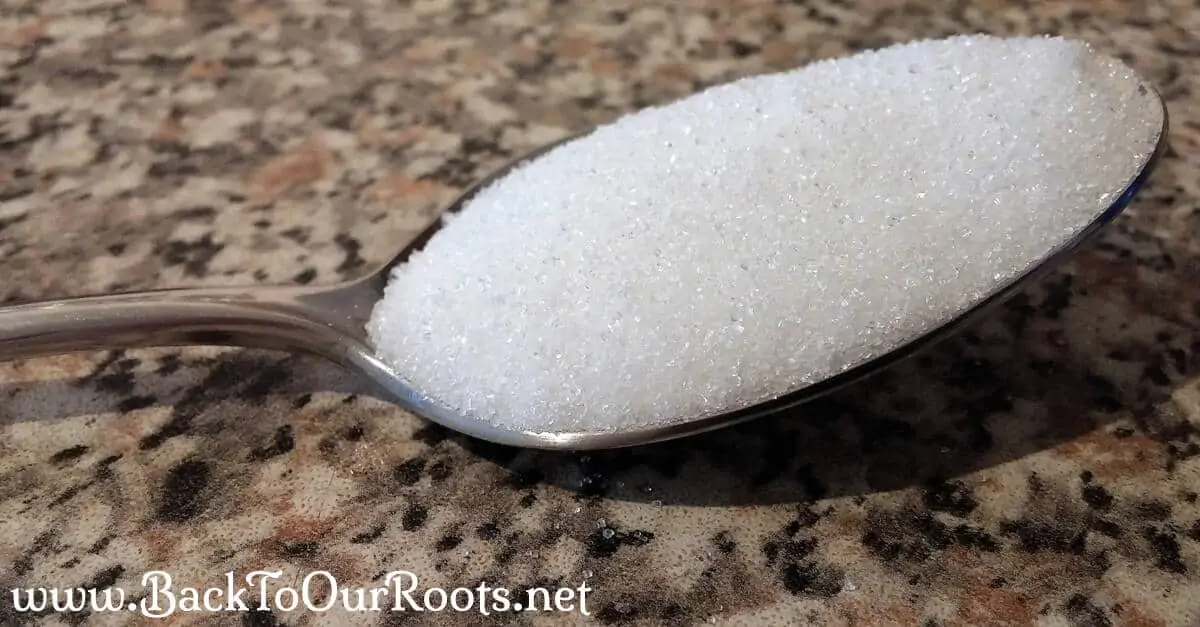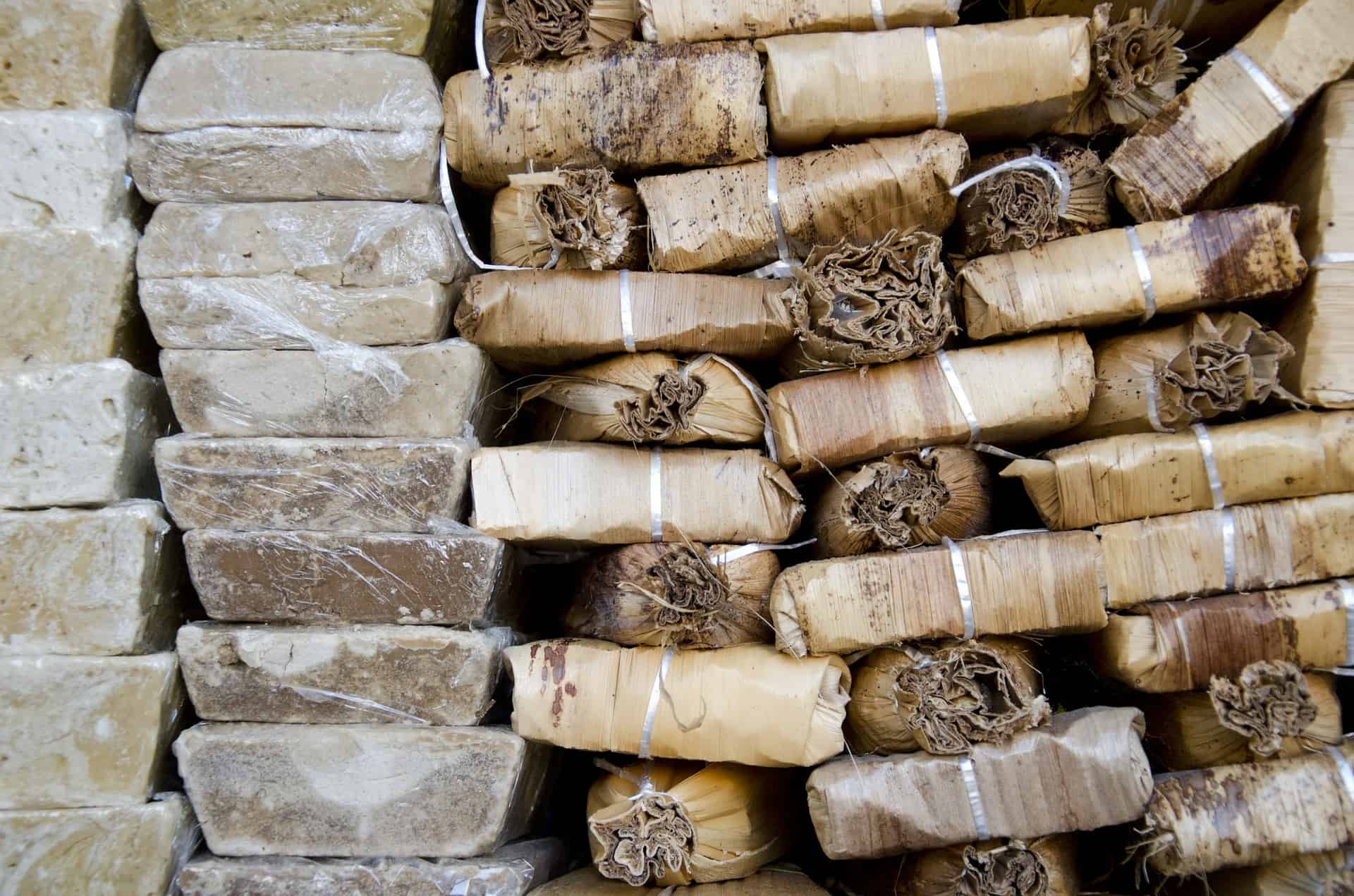
The Traditional Foods Kitchen is all about minimally processed natural sweeteners. So that means no artificial sugars, HFCS, or just plain ole corn syrup. I would put agave nectar in the “no” category as well. While it is natural, it is highly processed and is about 85% fructose. While fructose doesn’t spike blood sugar the way glucose does, it does affect the liver where it is metabolized, causes cholesterol imbalances, and is a contributing factor in insulin resistance and type 2 diabetes.
Pin for later
So what is minimally processed and natural? Number 1 would be raw, unfiltered honey. Then there is maple syrup. Grade B is less processed than Grade A. And molasses and sugars made from organic sugar cane juice. Stevia is a question mark, depending on the brand. Some brands contain natural flavors, erythritol, and/or dextrose so do your homework.
OK. Let’s get down to some details.
Dehydrated Sugar Cane Juice

Rapadura blocks
This one is really trendy right now. But, sadly, a lot of it is not as healthy as it might seem. Even the organic kind. It’s mostly white refined sugar with varying amounts of molasses added back in to give it some color. Most of it is boiled at high temperatures which destroys most of the vitamins and enzymes contained in the sugar cane. It’s then centrifuged to separate the molasses. So the molasses ends up with all the minerals and other good stuff that is left over.
There are two brands that are processed the old fashioned traditional way that don’t use high heat and don’t separate out the molasses. They are Rapadura and Sucanat. At this time those are the only 2 that I have found that contain more than trace amounts of nutrients. Some companies use the term Sucanat incorrectly.
In my kitchen I have both Sucanat and organic dehydrated sugar cane juice
. I figure the dehydrated juice is better than the pure white sugar. Sucanat is darker and has a richer taste and can sometimes change the texture of baked goods, while the other is virtually indistinguishable from white sugar.
I can also put molasses in here, since it’s a byproduct of sugar manufacturing. I think I have 2 recipes that use molasses, so I always keep a little in the pantry.
Honey

Honey comb
Raw, unfiltered, local honey is my favorite sweetener for my morning tea. If you are one who suffers from seasonal allergies, this will help keep those in check. Because the honey is unfiltered it has tiny bits of pollen in it that allows your body to grow accustomed to the local agitators. And when those particular things begin to bloom, your body is like, “Oh, I totally know what that is. I don’t need to freak out over that”. And it doesn’t.
Honey has some medicinal properties as well. It is antibacterial and antifungal. The Romans used it to pack battle wounds to keep them from getting infected. Its great mixed with a little lemon for a sore throat. It will soothe as well as kill some of those pesky germies.
And properly stored honey doesn’t go bad. Because of that, it was used by ancient Egyptians to preserve fruits and berries. If it crystallizes it can be gently warmed to melt the crystals and then used normally. If honey gets water in it, it will ferment. Lightly fermented it is probiotic. Ferment longer and it becomes mead. Which brings us to the Vikings. So now I think we’ve covered most of the ancient world. 🙂
Maple Syrup

Tapping maple trees
Maple syrup is made by “tapping” the trunk of a tree to harvest the sap. The sap is then boiled down until the proper consistency is reached. There are different grades of syrup based on how refined the syrup is. Grade A is the most refined and the most devoid of nutrition. Grade B is not as refined and has some nutrients left in it.
Interestingly, maples are not the only trees that were or are used for syrups. Oaks and hickories are commonly used as well. I don’t know for sure, but I would expect that different trees give different flavors. It would be a fun experiment to find out.
Stevia

Stevia plant
This is an herb that is native to Brazil and Paraguay. While most stevia found on your grocery store shelf is highly refined and 200 times sweeter than sugar, powdered stevia leaves that you grow yourself or get from an organic source are only about 30 to 40 times sweeter than sugar. If you are purchasing it, look for whole leaf stevia that doesn’t have any added ingredients.
So there is the somewhat limited list of sweeteners that I would recommend for your Traditional Foods kitchen. I guess the bottom line, really, is that our culture just uses way too much sugar. So even using the natural, organic, minimally processed sweeteners needs to be done in moderation. My personal goal is to continually use less and less sweeteners and retrain my palate until I really don’t miss them at all. Ambitious goal, I know, but baby steps count!
If you want to learn about healthy fats, click here.
